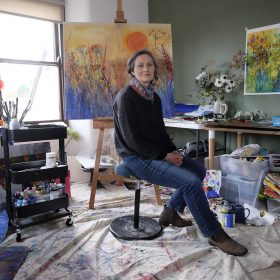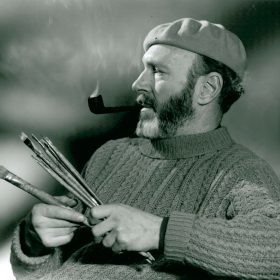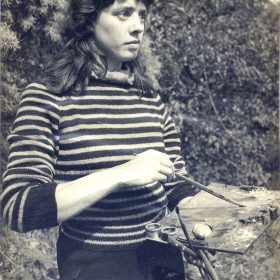Sir William Gillies was the dominant figure of the Edinburgh School over which both his personality and his work had a quiet authority. He led by example at the College of Art, encouraging his students to experiment but from a firm grounding in looking, and of course practice, drawing in particular. He also selected his staff to reflect this ethos: men and women who had a similar independence but respected hard work, what William MacTaggart called the good habit. The duties of teaching for Gillies and many of his colleagues in the School of Drawing and Painting were combined with their own practice without conflict; being a professional painter: working and exhibiting, was understood as integral to the reputation and health of the School. Robin Philipson, Elizabeth Blackadder, John Houston, David Michie and James Cumming were the beneficiaries of this attitude, along with their students, quietly instilled by Gillies over his fifty years of influence.
I have been trying to pin down my thoughts on the great man. I do not find it easy. In a way he remains an enigma. I was a student for five years while Gillies was Head of Paintings and yet I had only three or four lessons from him in all that time. The first was when MacTaggart called for Bill Gillies to come and see a painting I had done. He admired it generously and commended it for its tonal values. I had on the easel a much more freely painted thing with apples and a jug. He looked at it and said Apples are not tennis balls. They have planes. He then proceeded to push the wet paint around with his horny thumb, making the apples truly three dimensional, and expressed in planes. On another occasion I was propounding a theory I had come across about Organic Colour Values… I asked him if he did not agree with this. His esponse was typically anti-intellectual. No. Nature always gets the colour wrong, so you have to try to improve it.
David McClure, quoted in W.G. Gillies by W. Gordon Smith, Atelier Books, 1991
The Scottish Gallery exhibitions: 1945, 1949, 1952, 1958 (Festival), 1963 (Festival), 1968, 1971, 1986, 1989, 1991 (Festival), 2011, 2012, 2013, 2016, 2017, 2020, 2023 (Anniversary)
























